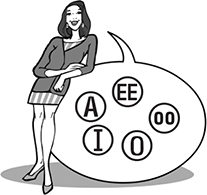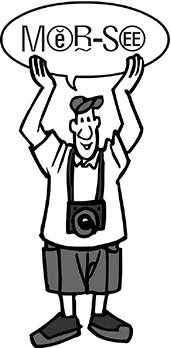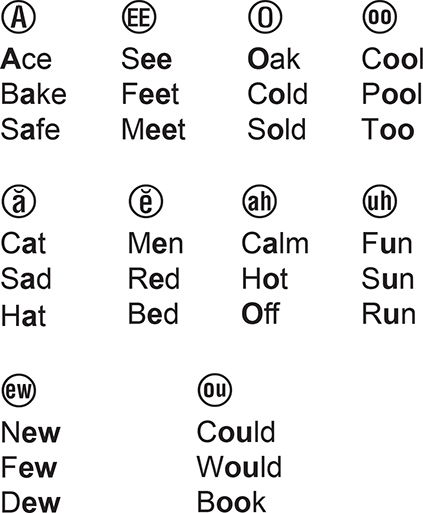Contents
Guide
Page List


Copyright 2018 by Easily Pronounced Language Systems (EPLS. All rights reserved. Except as permitted under the United States Copyright Act of 1976, no part of this publication may be reproduced or distributed in any form or by any means, or stored in a database or retrieval system, without the prior written permission of the publisher. ISBN: 978-1-26-011633-5
MHID: 1-26-011633-6 The material in this eBook also appears in the print version of this title: ISBN: 978-1-26-011632-8, MHID: 1-26-011632-8. eBook conversion by codeMantra
Version 1.0 All trademarks are trademarks of their respective owners. Rather than put a trademark symbol after every occurrence of a trademarked name, we use names in an editorial fashion only, and to the benefit of the trademark owner, with no intention of infringement of the trademark.
Where such designations appear in this book, they have been printed with initial caps. McGraw-Hill Education eBooks are available at special quantity discounts to use as premiums and sales promotions or for use in corporate training programs. To contact a representative, please visit the Contact Us page at www.mhprofessional.com. Information has been obtained by McGraw-Hill Education from sources believed to be reliable. However, because of the possibility of human or mechanical error by our sources, McGraw-Hill Education, or others, McGraw-Hill Education does not guarantee the accuracy, adequacy, or completeness of any information and is not responsible for any errors or omissions or the results obtained from the use of such information. McGraw-Hill Education Language Lab App Streaming audio recordings (requiring Internet connection) of 500 words and phrases from this book are available to help improve your pronunciation.
Go to www.mhlanguagelab.com to access the online version of this application, or search the iTunes or Google Play app stores for the free mobile version of the app. TERMS OF USE This is a copyrighted work and McGraw-Hill Education and its licensors reserve all rights in and to the work. Use of this work is subject to these terms. Except as permitted under the Copyright Act of 1976 and the right to store and retrieve one copy of the work, you may not decompile, disassemble, reverse engineer, reproduce, modify, create derivative works based upon, transmit, distribute, disseminate, sell, publish or sublicense the work or any part of it without McGraw-Hill Educations prior consent. You may use the work for your own noncommercial and personal use; any other use of the work is strictly prohibited. Your right to use the work may be terminated if you fail to comply with these terms.
THE WORK IS PROVIDED AS IS. McGRAW-HILL EDUCATION AND ITS LICENSORS MAKE NO GUARANTEES OR WARRANTIES AS TO THE ACCURACY, ADEQUACY OR COMPLETENESS OF OR RESULTS TO BE OBTAINED FROM USING THE WORK, INCLUDING ANY INFORMATION THAT CAN BE ACCESSED THROUGH THE WORK VIA HYPERLINK OR OTHERWISE, AND EXPRESSLY DISCLAIM ANY WARRANTY, EXPRESS OR IMPLIED, INCLUDING BUT NOT LIMITED TO IMPLIED WARRANTIES OF MERCHANTABILITY OR FITNESS FOR A PARTICULAR PURPOSE. McGraw-Hill Education and its licensors do not warrant or guarantee that the functions contained in the work will meet your requirements or that its operation will be uninterrupted or error free. Neither McGraw-Hill Education nor its licensors shall be liable to you or anyone else for any inaccuracy, error or omission, regardless of cause, in the work or for any damages resulting therefrom. McGraw-Hill Education has no responsibility for the content of any information accessed through the work. Under no circumstances shall McGraw-Hill Education and/or its licensors be liable for any indirect, incidental, special, punitive, consequential or similar damages that result from the use of or inability to use the work, even if any of them has been advised of the possibility of such damages.
This limitation of liability shall apply to any claim or cause whatsoever whether such claim or cause arises in contract, tort or otherwise.
CONTENTS

INTRODUCTION

The SAY IT RIGHT FOREIGN LANGUAGE PHRASE BOOK SERIES has been developed with the conviction that learning to speak a foreign language should be fun and easy! ALL SAY IT RIGHT phrase books feature the EPLS Vowel Symbol System, a revolutionary phonetic system that stresses consistency, clarity, and above all, simplicity! Since this unique phonetic system is used in all SAY IT RIGHT phrase books, you only have to learn the VOWEL SYMBOL SYSTEM ONCE! The SAY IT RIGHT series uses the easiest phrases possible for English speakers to pronounce and is designed to reflect how foreign languages are used by native speakers. You will be amazed at how confidence in your pronunciation leads to an eagerness to talk to other people in their own language. Whether you want to learn a new language for travel, education, business, study, or personal enrichment, SAY IT RIGHT phrase books offer a simple and effective method of pronunciation and communication.
PRONUNCIATION GUIDE

Most English speakers are familiar with the French word
Merci. This is how the correct pronunciation is represented in the EPLS Vowel Symbol System.
All French vowel sounds are assigned a specific non-changing symbol. When these symbols are used in conjunction with consonants and read normally, pronunciation of even the most difficult foreign word becomes incredibly EASY!. On the following page are all the EPLS Vowel Symbols used in this book. They are EASY to LEARN since their sounds are familiar. Beneath each symbol are three English words which contain the sound of the symbol. Practice pronouncing the words under each symbol until you mentally associate the correct vowel sound with the correct symbol.
Most symbols are pronounced the way they look! THE SAME BASIC SYMBOLS ARE USED IN ALL SAY IT RIGHT PHRASE BOOKS!
EPLS VOWEL SYMBOL SYSTEM

This symbol represents the French letter
u. Put your lips together as if to kiss and say
EE. This symbol represents a unique sound found in the letters
eu in French spelling. To master this sound you must listen to a native speakers pronunciation. The
ou sound in c
ould is an effective substitute.
EPLS CONSONANTS
Consonants are letters like
T,
D, and
K.
They are easy to recognize and their pronunciation seldom changes. The following pronunciation guide letters represent some unique French consonant 
Nasalized Vowel Sounds
In French certain vowels are nasalized. This () immediately following a symbol tells you to nasalize the sound that the symbol represents. Try pinching your nose while pronouncing these words (try not to sound the









 Copyright 2018 by Easily Pronounced Language Systems (EPLS. All rights reserved. Except as permitted under the United States Copyright Act of 1976, no part of this publication may be reproduced or distributed in any form or by any means, or stored in a database or retrieval system, without the prior written permission of the publisher. ISBN: 978-1-26-011633-5
Copyright 2018 by Easily Pronounced Language Systems (EPLS. All rights reserved. Except as permitted under the United States Copyright Act of 1976, no part of this publication may be reproduced or distributed in any form or by any means, or stored in a database or retrieval system, without the prior written permission of the publisher. ISBN: 978-1-26-011633-5
 The SAY IT RIGHT FOREIGN LANGUAGE PHRASE BOOK SERIES has been developed with the conviction that learning to speak a foreign language should be fun and easy! ALL SAY IT RIGHT phrase books feature the EPLS Vowel Symbol System, a revolutionary phonetic system that stresses consistency, clarity, and above all, simplicity! Since this unique phonetic system is used in all SAY IT RIGHT phrase books, you only have to learn the VOWEL SYMBOL SYSTEM ONCE! The SAY IT RIGHT series uses the easiest phrases possible for English speakers to pronounce and is designed to reflect how foreign languages are used by native speakers. You will be amazed at how confidence in your pronunciation leads to an eagerness to talk to other people in their own language. Whether you want to learn a new language for travel, education, business, study, or personal enrichment, SAY IT RIGHT phrase books offer a simple and effective method of pronunciation and communication.
The SAY IT RIGHT FOREIGN LANGUAGE PHRASE BOOK SERIES has been developed with the conviction that learning to speak a foreign language should be fun and easy! ALL SAY IT RIGHT phrase books feature the EPLS Vowel Symbol System, a revolutionary phonetic system that stresses consistency, clarity, and above all, simplicity! Since this unique phonetic system is used in all SAY IT RIGHT phrase books, you only have to learn the VOWEL SYMBOL SYSTEM ONCE! The SAY IT RIGHT series uses the easiest phrases possible for English speakers to pronounce and is designed to reflect how foreign languages are used by native speakers. You will be amazed at how confidence in your pronunciation leads to an eagerness to talk to other people in their own language. Whether you want to learn a new language for travel, education, business, study, or personal enrichment, SAY IT RIGHT phrase books offer a simple and effective method of pronunciation and communication.  Most English speakers are familiar with the French word Merci. This is how the correct pronunciation is represented in the EPLS Vowel Symbol System.
Most English speakers are familiar with the French word Merci. This is how the correct pronunciation is represented in the EPLS Vowel Symbol System.  This symbol represents the French letter u. Put your lips together as if to kiss and say EE. This symbol represents a unique sound found in the letters eu in French spelling. To master this sound you must listen to a native speakers pronunciation. The ou sound in could is an effective substitute.
This symbol represents the French letter u. Put your lips together as if to kiss and say EE. This symbol represents a unique sound found in the letters eu in French spelling. To master this sound you must listen to a native speakers pronunciation. The ou sound in could is an effective substitute. 